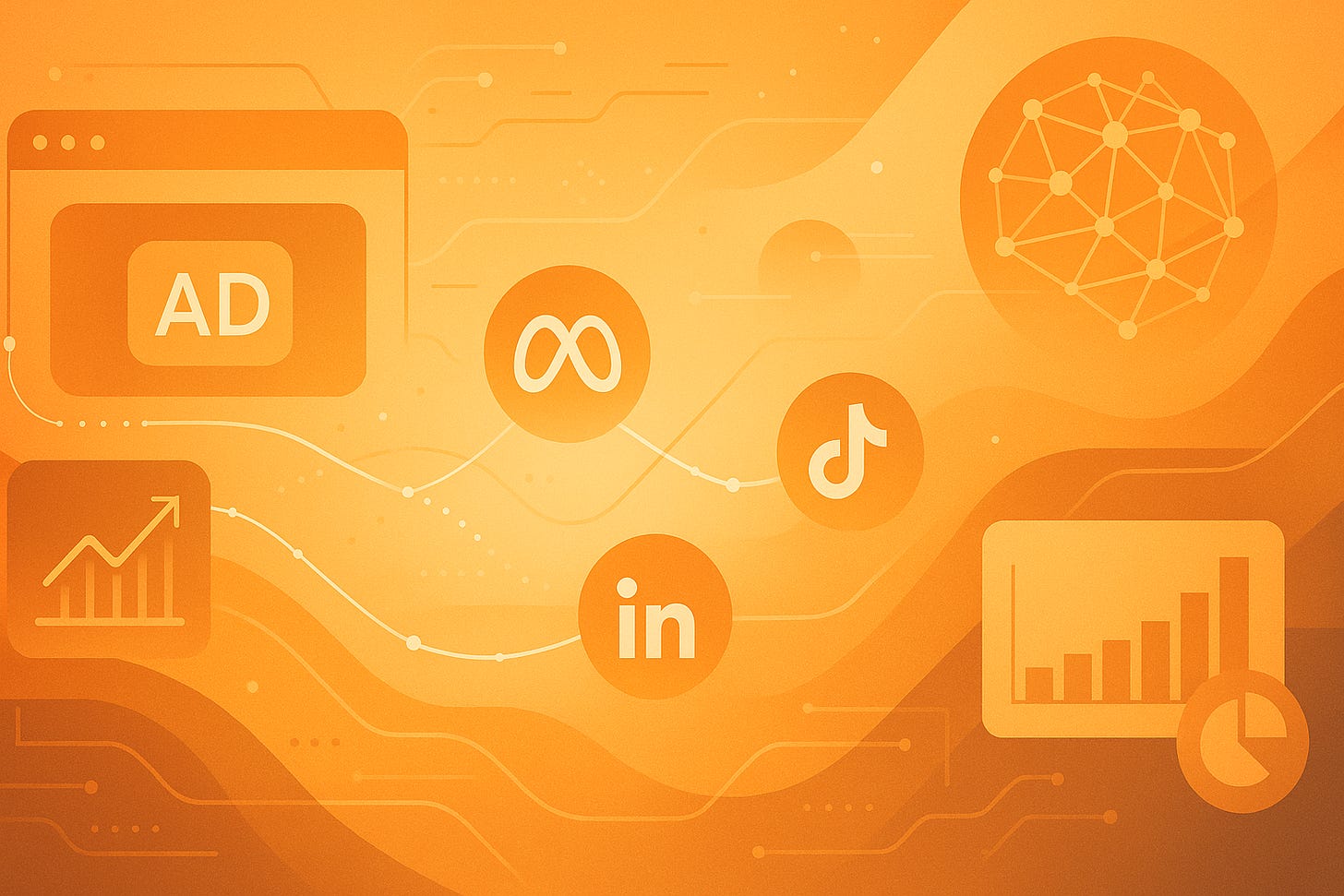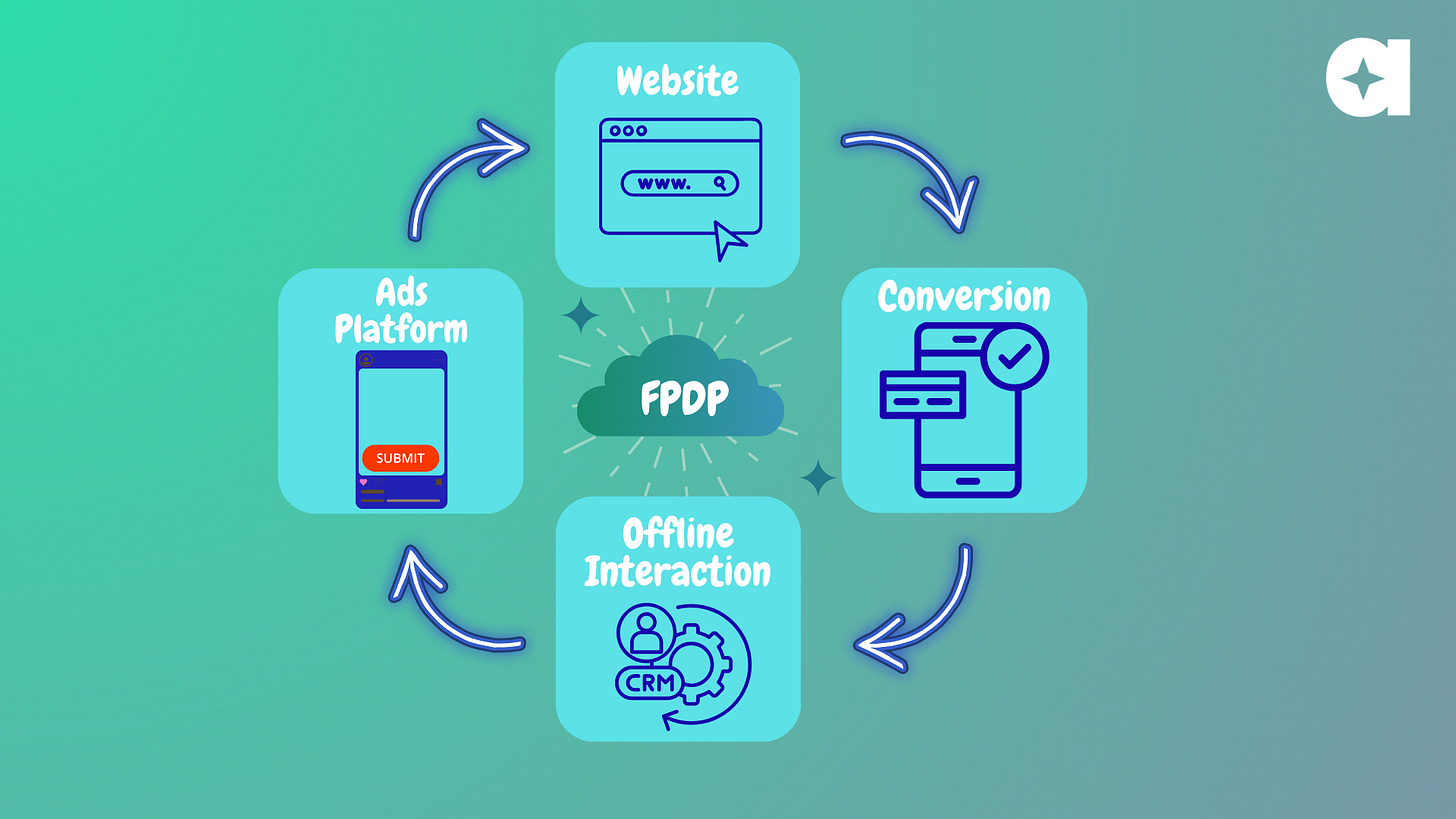The Power of Right Signals: How First-Party Data Transforms Ad Performance
Smarter Signals. Aligned Ads. Real Results.
Ad channels like Meta and Google Ads are burning your budget—not because they don’t work, but because they’re optimising for the wrong outcomes.
The culprit? Signal quality.
Advertising platforms like Meta, Google, TikTok etc. now operate as advanced AI-driven systems, executing billions of optimisation choices each day. However, there’s a critical limitation: the quality of these algorithms’ output depends entirely on the quality of input data they receive.
Providing these systems with inadequate, fragmented, or inaccurate information means you’re effectively teaching their AI to target the wrong audience—resulting in wasted advertising budgets.
The AI algorithms powering Meta and Google Ads process countless decisions every second, determining your ad’s audience, timing, and pricing. The fundamental reality is simple: these platforms can only perform at the level of the data you provide to them.If you send incomplete, inaccurate, or wrong signals, the algorithm tries to chase the wrong people—and your budget exhausts fast.
First-party data platforms (FPDP) like Aixel, helps businesses to fix this hidden issue by ensuring ad platforms receive clean, complete, and high-value signals that drive real conversions, not vanity metrics. This guide breaks down why signal quality matters, how wrong signals waste your budget, and how first-party data platforms like Aixel solve this critical problem.
What Are Ad Signals and Why Do They Matter?
Every time a user clicks your ad, fills a form, or makes a purchase, a “signal” is sent to Ad platforms. These signals tell the platform’s AI what success looks like.
Ad signals function as the language through which your business communicates value to advertising platforms. Each user interaction—whether it’s an ad click, page view, form submission, or completed purchase—transmits crucial data to Meta or Google, essentially defining what a successful outcome means for your campaign.
These signals empower ad platforms to make intelligent decisions about:
Identifying and targeting audiences with the highest conversion potential
Calculating optimal bid amounts for maximum ROI on each impression
Selecting ad placements that generate the strongest performance
The quality of your signals directly determines your campaign trajectory. Robust, precise signals enable the AI to continuously refine and enhance your campaigns autonomously. Conversely, weak or distorted signals misguide the algorithm, causing it to optimise for the better outcomes—resulting in budget drain on unqualified traffic that never converts. In essence, signals are your strategic tool for training Ad Algorithms to recognise and pursue genuine business success.
The Cost of Wrong Signals - The Ways Bad Data Destroys ROI
Optimising for the Wrong Event: - Algorithm Misalignment. One of the most common and costly errors is telling the algorithm to optimise for an action or event that doesn’t correlate with business value. Many brands still optimise for link clicks or landing page views instead of purchases or qualified leads. The platform then finds people who love clicking—not people who buy.
Result? You meet your click goal but fail your revenue goal.
Incomplete Tracking from Pixels. Browser-based tracking is breaking down. Privacy rules, iOS restrictions, and ad blockers stop up to 50% of pixel data from ever reaching Meta or Google. That means your algorithm is learning from half the story—and wasting the rest of your budget.
Low-Quality or Missing Customer Data. Even when tracking the right event or conversions, many businesses send signals that lack the customer parameters needed for effective matching and attribution. The Event Match Quality (EMQ) score measures how well your conversion data matches real user profiles on the Meta platform. Poor EMQ means Meta struggles to identify users who converted, crippling the algorithm’s ability to find similar high-value audiences. Low EMQ confuse the algorithm and increase your CPA (Cost per Acquisition) by 20–30%.
How First-Party Data Fixes Everything
First-party data is information you collect directly from customer interactions with your business—website visits, purchases, CRM records, email engagement, app usage, customer service interactions. First-party data makes it incredibly valuable because it’s based on real actions people have taken with your business.
This follows privacy laws, and you have complete control over it without relying on anyone else. Most importantly, it helps you predict what customers will actually do next, like whether they’ll make a purchase or how much they’ll spend over time.
In today’s advertising world where cookies are disappearing and privacy matters more than ever, your own customer data has become the most powerful tool you have for running successful ad campaigns. Brands using first-party data see up to 2.9X revenue uplift and 40–60% ROAS improvement. This means they can reduce wasted ad spend by targeting precise audience segments based on actual user behaviours.
Why Server-Side Tracking Beats Browser Pixels
What Is Server-Side Tracking?
Server-side tracking is the modern way of collecting and sending conversion data directly from your own servers to advertising platforms like Meta and Google—without relying on browser-based pixels or cookies.
Most marketers still rely on browser-based tracking tools like Meta Pixel or Google Tag—but in 2025, that’s not enough. Due to privacy updates, ad blockers, and cookie restrictions, browsers now block up to 50% of pixel data, meaning half your conversions never reach the ad platforms. When that happens, the algorithm learns from incomplete data—and your ads start targeting the wrong audience.
Server-side tracking solves this. Instead of sending data through a browser, conversion events are sent directly from your server to ad platforms via secure APIs such as Meta’s Conversions API (CAPI) or Google’s Enhanced Conversions. This method ensures that every purchase, signup, or qualified lead is captured and shared accurately—without being lost to browser limitations.
Why It Matters
No signal loss: Ad blockers and iOS privacy settings can’t interfere.
Better optimisation: Ad algorithms learn from complete, real conversion data.
Stronger privacy: Data is shared securely and stays fully compliant.
Longer visibility: First-party cookies stored on your server last up to 2 years.
The Benefits of a First-Party Data Platform
A first-party data platform gives marketers full ownership and control over their customer data—helping them send richer, more reliable signals to ad platforms like Meta, Google, and TikTok. Unlike scattered tracking setups or unreliable browser pixels, it unifies data from your website, CRM, and sales channels to create a single, privacy-safe source of truth. This enables smarter optimisation, stronger targeting, and measurable performance gains.
Here’s how a first-party data platform delivers results:
Captures Every Conversion Through Server-Side Tracking.
A first-party data platform routes all your conversion data directly from your servers to ad platforms using secure APIs such as Meta’s Conversions API or Google’s Enhanced Conversions. By bypassing browser-based tracking, it eliminates data loss from ad blockers and privacy restrictions—ensuring every interaction and conversion is recorded, whether it happens online or offline (in-store, phone calls, chats, or appointment bookings). This creates a complete, uninterrupted data stream that helps algorithms learn faster and optimise more effectively.
Enriches Every Event With High-Quality Customer Data
One of the biggest strengths of a first-party data platform is its ability to enrich conversion events with verified, hashed customer information such as email, phone number, and location. These enriched signals significantly boost Event Match Quality (EMQ) on Meta and Google, helping their systems accurately match conversions to user profiles. The result is more precise audience modeling, better retargeting accuracy, and lower acquisition costs—because the algorithm learns from real, high-intent customer data instead of surface-level actions.
Enables Closed-Loop Attribution and Smarter Optimisation
A first-party data platform connects directly with your CRM and sales tools, allowing you to send back downstream data—like qualified leads, successful purchases, or repeat buyers—to ad platforms. This process, called closed-loop attribution, teaches the algorithm what real success looks like, not just who clicked a button. With a unified first-party system in place, you gain a full view of the customer journey—from the first ad interaction to the final purchase—helping you measure ROI more accurately and design campaigns that drive true business growth.
Works Seamlessly Across All Ad Platforms
A first-party data platform consolidates your marketing signals into one system, syncing data in real time across Meta, Google, LinkedIn, TikTok, Snapchat, and more. This ensures that all ad platforms receive the same high-quality, up-to-date signals for consistent performance improvement.
Conclusion: Turn Your Data Into a Competitive Advantage
The era of “set and forget” ads is over. In today’s AI-driven marketing world, success depends on the quality of your data signals. If your tracking is incomplete or inaccurate, ad algorithms are learning the wrong lessons—wasting budget, missing opportunities, and holding back your growth.
That’s where Aixel comes in.
As a powerful first-party data platform, Aixel helps you take control of your data and transform it into smarter signals that ad platforms can truly understand. It captures every conversion, enriches events with verified customer details, and connects directly with your CRM to create a real-time feedback loop with Meta, Google, TikTok, and other major ad channels.
By feeding ad platforms cleaner, more complete, and privacy-safe data, Aixel helps your campaigns exit the learning phase faster, reduce CAC, and boost ROAS—ensuring every ad dollar is spent on audiences that actually convert.
Stop wasting budget on bad signals. Start teaching your ad platforms what real success looks like—with Aixel.




